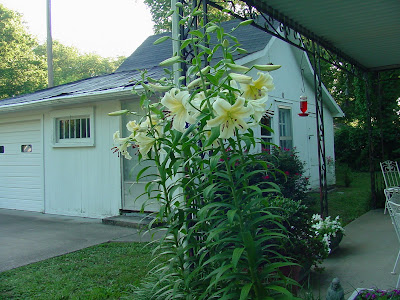

The dogs and I were out early this morning, not only to avoid the heat, but to look for Tennessee's newest nocturnal citizen, the Nine-banded Armadillo. Just in the past week I have seen two dead ones out on Highway 100, one of them in the hell-strip between the Harris-Teeter grocery store and the highway. I doubt that carcass stayed there long since no one wants to smell dead armadillo on their way in to pick up sushi. The other carcass, out by the park, was already being appreciated by the black vultures.
Three years ago, a young man I worked with saw a live armadillo walking along the road in Pegram, a small town 15 or so miles west of the city. Not long after, on my way back from Reelfoot Lake, I saw half a dozen dead ones on the Middle Tennessee side of the I-40 bridge over the Tennessee River. From north to south ,Tennessee is not a wide state. The Tennessee River is wide with a bridge to the north at Paris Landing, in the middle at New Johnsonville, and then in the extreme south in Savannah. It is hard to believe that these are the only three immigrant portals for the armadillo, which has managed over time to bumble itself from South America up to Texas, presumably crossing rivers all the way.
I use the word "bumble" with confidence, for that seems to be the way the armadillo gets through life. As one can see in the photo, this animal looks like an armored possum- a mammalian version of the Humvee. This only looks like an advantage, for I have been researching armadillos and their natural history, and it seems their shell will not even stand up to a coyote. They are born with their eyes open, but this is no help- they are almost blind and find what they need by smell. Which brings us again to the Big Question.
How did they get across the Mississippi River, and then the Tennessee? One source I read claimed they could walk underwater. Another- that they could swallow air, blow up like a balloon, and float across. I suppose that is more likely than that they hitch-hiked or hid in the wheel wells of jet planes. Or rented a car. Since I am a follower of William of Occam, I defer to him. The simplest explanation is that they came over the bridges or swam across. The latter is no small feat. U.S. Grant and the Union Army had trouble getting across the Tennessee ( albeit because people were shooting at them from the other side).
Yet what does it mean for us- that they are now in the neighborhood- regardless of how they arrived.
First off, are they edible? Internet sources say they are. That they taste like pork. I consulted Mrs Mary Land's "Louisiana Cookery", which to me is the Bible Of Southern Critter Cuisine. Mrs. Land, a good woman to consult if you want to cook a chipmunk, does not mention armadillos.
Do they carry diseases? Indeed they do. Some have been infected with leprosy, which may be why Mrs Land did not cook them.
Are they destructive? That depends on if they are digging up your yard and not your neighbor's. Or undermining your house's foundation. People in modest Pegram may not mind a few holes in their lawn since they have better things to worry about. They may not mind an armadillo here or there. But the armadillo at Harris-Teeter was in the Belle Meade Highlands and not that far from the mansions along the Boulevard. Soon the armadillo's mug shot will be on the pest control vans along side the corn snake, the raccoon, and attic-invading squirrels. After all, Belle Meade is a very exclusive neighborhood. The armadillo would have no trouble finding houses so big he could not miss bumping into them. But where would he find food in a land without termites and lawn grub worms?










































